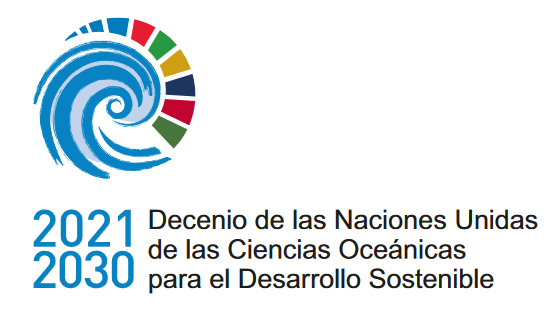Aspectos poblacionales de la almeja Ameghinomya antiqua del noroeste del Golfo San Matías en el inicio de su pesquería
DOI:
https://doi.org/10.47193/mafis.3722024010505Palabras clave:
Estructura poblacional, Veneridae, pesquería de bivalvosResumen
Los parámetros poblacionales son fundamentales cuando un nuevo recurso se incorpora a la canasta pesquera. En el noroeste del Golfo San Matías, Ameghinomya antiqua comenzó a ser recolectada con fines comerciales. El objetivo de este trabajo fue analizar la estructura poblacional y describir el crecimiento individual de ejemplares de A. antiqua de dos poblaciones locales (El Sótano y Playa Villarino) previo al inicio de su explotación. Los organismos de estas poblaciones difirieron en tallas y pesos de valvas, tanto en la estructura general como en las medidas de tendencia central. Las estructuras de edades también resultaron disímiles: El Sótano presenta individuos longevos (mayores a 18 años) mientras que Playa Villarino está caracterizada por individuos jóvenes, menores a 15 años. La especie presenta un crecimiento acelerado durante los primeros años, alcanzando 90% de la talla máxima a los 5 años. La edad máxima estimada fue de 26 años. El alto asintótico fue mayor en Playa Villarino (56,56 mm) que en El Sótano (53,03 mm). Estas poblaciones poseen características biológicas y poblacionales que sugieren que podría realizarse un manejo sustentable de esta especie al incorporarse a la canasta de recursos bentónicos de la flota artesanal del Golfo San Matías.
Descargas
Referencias
Aguirre ML, Richiano S, Alvarez A, Farinati EA. 2015. Reading shell shape: implications for palaeoenvironmental reconstructions. A case study for bivalves from the marine Quaternary of Argentina (south-western Atlantic). Hist Biol. 28 (6): 753-773. DOI: https://doi.org/10.1080/08912963.2015.1026898
Amoroso R. 2004. Heterogeneidad especial en la dinámica de la metapoblación de vieira tehuelche (Aequipecten tehuelchus) del golfo San José [tesis de licenciatura]. Puerto Madryn: Universidad Nacional de la Patagonia “San Juan Bosco”. 55 p.
Amoroso RO, Gagliardini DA. 2010. Inferring complex hydrographic processes using remote-sensed images: turbulent fluxes in the patagonian gulfs and implications for scallop metapopulation dynamics. J Coast Res. 26 (2): 320-332. DOI: https://doi.org/10.2112/08-1095.1
Barrionuevo DN, Schuldt M, Verdinelli MA. 1976. Nuevas consideraciones ecológicas sobre la cholguera de Punta Loma. Golfo Nuevo-Chubut. Revista del Museo de La Plata, Sección Zoología. 12: 167-181.
Boretto GM, Baranzelli MC, Gordillo S, Consoloni I, Zanchetta G, Morán G. 2014. Shell morphometric variations in a Patagonian Argentina clam (Ameghinomya antiqua) from the Mid-Pleistocene (MIS 7) to the present. Quat Int. 352: 48-58. DOI: https://doi.org/10.1016/j.quaint.2014.09.033
Borzone CA. 1992. El ciclo gonadal de Venus antiqua King & Broderip, 1835 (Bivalvia, Veneridae) por Polinices sp. (Gastropoda, Naticidae). Atlantica. 10: 75-84.
Brown JR. 1988. Multivariate analyses of the role of environmental factors in seasonal and site-related growth variation in the Pacific oyster Crassostrea gigas. Mar Ecol Prog Ser. 45: 125-236.
Cadima EL. 2003. Manual de evaluación de recursos pesqueros. FAO Documento Técnico de Pesca. Nº 393. 185 p.
Canty A, Ripley BD. 2020. boot: Bootstrap R(S-Plus) Fuctions. R package versión 1.3-25. https://cran.r-project.org/web/packages/boot/index.html.
Carcelles AR. 1946. Mariscos de las costas argentinas. Argentina Austral. 18: 18-21
Castellanos JA. 1967. Catálogo de los moluscos marinos bonaerenses. Anales de la Comisión de Investigación Científica de la Provincia de Buenos Aires (CIC). 8.
Ciocco NF. 1994. La pesquería de vieiras mediante buceo del Golfo San José (Chubut, Argentina): teoría y práctica de su manejo. Taller Diagnóstico y perspectivas de las pesquerías artesanales en América Austral (Chile-Argentina). IFOP-Chile/MAAF-U. Washington/Tinker Foundation. Puerto Montt. p. 7-8.
Ciocco NF. 2006. Relevamiento de bancos de bivalvos de interés marisquero en la porción sur del Golfo San Matías. Informe Técnico Nº 18 del LAPEMAR. CENPAT, Puerto Madryn.
Clasing E, Brey T, Stead R, Navarro J, Asencio G. 1994. Population dynamics of Venus antiqua (Bivalvia: Veneracea) in the Bahía de Yaldad, Isla de Chiloé, Southern Chile. J Exp Mar Biol Ecol. 177: 171-186. DOI: https://doi.org/10.1016/0022-0981(94)90235-6
Cremonte F. 1999. Estudio parasitológico de bivalvos que habitan ambientes marinos y mixohalinos en Argentina [tesis doctoral]. La Plata: Facultad de Ciencias Naturales y Museo, Universidad Nacional de La Plata. 207 p.
Cranfield HJ, Michael KP, Francis RICC. 1996. Growth rates of five species of subtidal clam on a beach in the South Island, New Zealand. Mar Freshwat Res. 47: 773-784.
Doldan MS, Gimenez LH, Morsan EM. 2018. Eurhomalea exalbida (Dillwyn, 1817): información preliminar de las poblaciones del Golfo San Matías. Informe interno CIMAS. Nº 17/2018. Centro de Investigación Aplicada y Transferencia Tecnológica en Recursos Marinos “Almirante Storni”, San Antonio Oeste.
Dowling NA, Smith DC, Knuckey I, Smith ADM, Domaschenz P, Patterson HM, Whitelaw W. 2008. Developing harvest strategies for low-value and data-poor fisheries: case studies from three Australian fisheries. Fish Res. 94 (3): 380-390. DOI: https://doi.org/10.1016/j.fishres.2008.09.033
Dowling NA, Dichmont CM, Venables W, Smith ADM, Smith DC, Power D, Galeano D. 2013. From low-to high-value fisheries: is it possible to quantify the trade-off between management cost, risk and catch? Mar Policy. 40: 41-52.
Escati-Peñaloza G. 2005. Variación espacial en el crecimiento individual de la almeja rayada Ameghinomya antiqua (P. P. King, 1832), en el Golfo San José [tesis de licenciatura]. Puerto Madryn: Universidad San Juan Bosco. p. 68.
Escati-Peñaloza G, Parma AM, Orensanz JL. 2010. Analysis of longitudinal growth increment data using mixed-effects models: individual and spatial variability in a clam. Fish Res. 105 (2): 91-101.
Escofet AM, Olivier SR, Orensanz JM, Scarabino VM. 1977. Biocenología bentónica del Golfo de San Matías (Río Negro, Argentina): Metodología, experiencias y resultados del estudio ecológico de un gran espacio geográfico en América Latina. Informe Nº DOC0083.
Field A, Miles J, Field Z. 2012. Discovering Statistics Using R. 1ra ed. Londres: SAGE Publication Ltd.
Fiori SM, Morsan EM. 2004. Age and individual growth of Mesodesma mactroides (Bivalvia) in the southernmost range of its distribution. ICES J Mar Sci. 61: 1253-1259. DOI: https://doi.org/10.1016/j.icesjms.2004.07.025
Haddon M. 2001. Modelling and quantitative methods in fisheries. Florida: Chapman & Hall/CRC.
Hilborn R, Maguire JJ, Parma AM, Rosenberg AA. 2001. The Precautionary Approach and risk management: can they increase the probability of success in fishery management? Can J Fish Aquat Sci. 58: 99-107. DOI: https://doi.org/10.1139/f00-225
Kube J, Peters C, Powilleit M. 1996. Spatial variation in growth of Macoma balthica and Mya arenaria (Mollusca, Bivalvia) in relation to environmental gradients in the Pomeranian Bay (Southern Baltic Sea). Arch Fish Mar Res. 44: 81-93.
Jerez G, Ponce F, Rivas D. 1991. Análisis de la explotación del recurso almeja (Venus antiqua antiqua King y Broderip, 1935) en la Bahía de Ancud, Chile. Invest Pesq. 36: 3-16.
Lomovasky BJ, Brey T, Morriconi E, Calvo J. 2002. Growth and production of the venerid bivalve Eurhomalea exalbida in the Beagle Channel, Tierra del Fuego. J Sea Res. 48 (3): 209-216. DOI: https://doi.org/10.1016/S1385-1101(02)00133-8
Lomovasky BJ, Lasta M, Valiñas M, Bruschetti M, Ribiero P, Campodónico S, Iribarne O. 2008. Differences in shell morphology and internal growth pattern of the Patagonian scallop Zygochlamys patagonica in the four main beds across their SW Atlantic distribution range. Fish Res. 89: 266-275.
Lozada E, Bustos H. 1984. Madurez sexual y fecundidad de Venus antiqua (King y Broderip 1835) en la Bahía de Ancud (Mollusca: Bivalvia: Veneridae). Rev Biol Mar. 20 (2): 91-112.
Mair P, Wilcox R. 2020. Robust Statistical Methods in R Using the WRS2 Package. Behav Res Methods. 52: 464-488.
Morán G. 2019. La almeja rayada (Ameghinomya antiqua) como archivo climático y ambiental en el Holoceno de Patagonia Argentina [tesis doctoral]. Córdoba: Universidad Nacional de Córdoba. 174 p.
Morán G, Martínez JJ, Reyna PB, Martín J, Malits A, Gordillo S. 2022. Identifying environmental drivers of shell shape and size variation in a widely distributed marine bivalve along the Atlantic Patagonian coast. Zoologischer Anzeiger. 299: 49-61. DOI: https://doi.org/10.1016/j.jcz.2022.05.003
Morsan EM, Orensanz JM. 2004. Age structure and growth in an unusual population of purple clams, Amiantis purpuratus (Lamarck, 1818) (Bivalvia: Veneridae), from Argentina Patagonia. J Shellfish Res. 23: 73-80.
Morsan EM, Kroeck MA. 2005. Reproductive cycle of purple clam, Amiantis purpurata (Bivalvia: Veneridae) in northern Patagonia (Argentina). J Mar Biol Assoc UK. 85: 1-7. DOI: https://doi.org/10.1017/S002531540501129Xh
Narvarte M, Gonzáles R, Filippo P. 2007. Artisanal mollusc fisheries in San Matías Gulf (Patagonia, Argentina): an appraisal of the factors contributing to unsustainability. Fish Res. 87 (1): 68-76. DOI: https://doi.org/10.1016/j.fishres.2007.06.012
Nel R, McLachlan A, Winter DP. 2001. The effect of grain size on the burrowing of two Donax species. J Exp Mar Biol Ecol. 265 (2): 219-238. DOI: https://doi.org/10.1016/S0022-0981(01)00335-5
Orensanz JM, Jamieson GS. 1998. The assessment and management of spatially structured stocks: an overview of the North Pacific Symposium on Invertebrate Stocks Assessment and Management. En: Jamieson GS, Campbell A, editores. Proceeding of the North Pacific Simposium on invertebrate Stock Assessment and Management. Can Spec Publ Fish Aquat Sci. 125: 441-460.
Orensanz JM, Parma AM, Turk T, Valero J. 2005. Population dynamics, assessment and management. En: Shumway S, editor. Scallops: biology, ecology and aquaculture, 2da ed. Amsterdam: Elsevier. p 765-868.
Osorio C, Frassinetti D, Bustos E. 1983. Taxonomía y morfometría de Venus antiqua antiqua King & Broderip. 1835 (Molusca, Bivalvia, Veneridae). Tethys. 11 (1): 49-56.
Pérez DE, Del Río CJ, Nielsen SN. 2013. Sistemática y filogenia del género Ameghinomya Ihering, 1907 (Bivalvia: Chioninae) del Cenozoico de Argentina y Chile. Ameghiniana. 50 (3): 354-374. DOI: https://doi.org/10.5710/AMGH.30.04.2013.594
Pinheiro, J, Bates D. 2002. Mixed-effects models in S and S-PLUS. Springer Science & Business Media. 530 p.
Pinheiro J, Bates D, R Core Team. 2023. nlme: Linear and Nonlinear Mixed Effects Models. R package version 3.1-162. https://CRAN.R-project.org/package=nlme.
R Core Team. 2023. R: A language and environment for statistical computing. R Foundation for Statistical Computing, Vienna, Austria. https://www.R-project.org/.
Reyes A, Barahona N, Asencio V, Robothem H, Lozada E, Roa R, Jeréz G, Carmona A, Pezo V, Miranda H. 1995. Monitoreo de la almeja en la X Región. IFOP. Informe Final FIP-IT/93-14. Instituto de Fomento Pesquero, Chile.
Rivas A, Beier E. 1990. Temperature and salinity fields in the north patagonian gulfs. Oceanol Acta. 13 (1): 15-20.
Rubo S, Aguirre ML, Richiano SM, Medina RA, Schöne BR. 2018. Leukoma antiqua (Bivalvia) - a high-resolution marine paleoclimate archive for southern South America? Palaeogeogr Palaeoclimatol Palaecoecol. 505: 398-409. DOI: https://doi.org/10.1016/j.palaeo.2018.06.024
Salazar Pinto RC, Del Castillo Galarza RS. 2018. Fundamentos básicos de estadística. Quito.
Saldaño M. 2022. Pesquería artesanal de moluscos del Golfo San Matías: Caracterización de aspectos biológicos y económicos de la pesquería de Eucallista purpurata (almeja púrpura) y Panopea abbreviata (almeja panopea) [tesis de grado]. Río Negro: Universidad Nacional del Comahue. 76 p.
Sebens KP. 1982. The limits to indeterminate growth: an optimal size model applied to passive suspension feeders. Ecology. 63 (1): 209-222.
Sebens KP. 1987. The ecology of indeterminate growth in animals. Ann Rev Ecol Syst. 18: 371-407.
Sebens K, Sarà G, Nishizaki M. 2017. Energetics, particle capture, and growth dynamics of benthic suspension feeders. En: Rossi S, Bramanti L, Gori A, Orejas C, editores. Marine Animal Forests. Cham: Springer. p. 813-854. DOI: https://doi.org/10.1007/978-3-319-21012-4_17
[SERNAPESCA] Servicio Nacional de Pesca y Acuicultura. 2023. Ministerio de Economía, Fomento y Turismo, Chile. [consultado noviembre 2023]. https://www.sernapesca.cl/.
Tonini M. 2010. Modelado numérico del ecosistema de los Golfos Norpatagónicos [tesis doctoral]. Bahía Blanca: Universidad Nacional del Sur, Bahía Blanca. p. 260.
Urban JH. 1996. Population dynamics of the bivalves Venus antiqua, Tagelus dombeii and Ensis macha from Chile at 36° S. J Shellfish Res. 15 (3): 719-727.
Velasquez R. 2022. Revisión del ciclo reproductivo de Eucallista purpurata (Lamarck, 1818) (=Amiantis purpurata) (Bivalvia: Veneridae) en Península Villarino (Golfo San Matías, Río Negro) e interacción con su fauna parasitaria. [tesis de licenciatura]. Río Negro: Universidad Nacional del Comahue. 88 p.
Verdinelli MA, Schuldt M. 1976. Consideraciones preliminares sobre aspectos de la dinámica poblacional y reproducción de la almeja rayada (Ameghinomya antiqua King-Chionidae) en Punta Loma Golfo Nuevo-Chubut. Revista del Museo de La Plata, Sección Zoología. 119: 183-202.
Williams GN, Zaidman PC, Glembocki NG, Narvarte MA, González RAC, Esteves JL, Gagliardini DA. 2014. Comparison between remotely-sensed sea-surface temperature (AVHRR) and in situ records in San Matías Gulf (Patagonia, Argentina). Lat Am J Aquat Res. 42 (1): 192-203. DOI: https://doi.org/10.3856/vol42-issue1-fulltext-16
Wickham H. 2009. ggplot2: elegant graphics for data analysis. Nueva York: Springer. DOI: https://doi.org/10.1007/978-0-387-98141-3
Wickham H, Francois R. 2016. dplyr: a grammar of data manipulation. R package version 0.5.0. https://CRAN.R-project.org/package=dplyr.
Zaixso HE. 1996. Distribución y abundancia de bivalvos de fondos blandos submareales del Golfo San José y sur del Golfo San Matías (Chubut, Argentina). Medio Ambiente (Chile). 36: 43-56.
Živkov MT, Trichkova TA, Raikova-Petrova GN. 1999. Biological reasons for the unsuitability of growth parameters and indices for comparing fish growth. Environ Biol Fish. 54: 67-76.

Publicado
Número
Sección
Licencia
Derechos de autor 2024 Paula C. Zaidman, Fracisco E. Surdo, Rocío Velasquez, M. Socorro Doldan

Esta obra está bajo una licencia internacional Creative Commons Atribución-NoComercial-CompartirIgual 4.0.
Los autores de los artículos publicados en Marine and Fishery Sciences conservan los derechos de autor de sus artículos, a excepción de las imágenes de terceros y otros materiales añadidos por Marine and Fishery Sciences, que están sujetos a los derechos de autor de sus respectivos propietarios. Por lo tanto, los autores son libres de difundir y volver a publicar sus artículos, sujeto a los requisitos de los propietarios de derechos de autor de terceros y sujeto a que la publicación original sea completamente citada. Los visitantes también pueden descargar y reenviar artículos sujetos a los requisitos de citas. La capacidad de copiar, descargar, reenviar o distribuir cualquier material siempre está sujeta a los avisos de derechos de autor que se muestran. Los avisos de copyright deben mostrarse de manera prominente y no pueden borrarse, eliminarse u ocultarse, total o parcialmente. El autoalmacenamiento en servidores y repositorios de preimpresión está permitido para todas las versiones.
Esta revista ofrece a los autores una política de acceso abierto. Los usuarios pueden leer, descargar, copiar, distribuir, imprimir, buscar o vincular los textos completos de los artículos, o usarlos para cualquier otro propósito legal dentro de la licencia Creative Commons 4.0 (BY-NC-SA), sin solicitar permiso previo del editor o del autor. Esto está de acuerdo con la definición BOAI de acceso abierto.






















